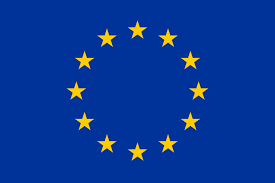Innovative processes to redesign social-healthcare systems in Benevento, Italy
The e-Care PCP comes from the ambitious project to promote the development of a new organizational-technological system that redesigns social-healthcare processes with the support of ICT innovations through the involvement of actors from different scientific backgrounds (i.e. general practitioners, geriatricians, specialists, social workers biomedical engineers, computer scientists).
The aim was to elaborate, develop, test and validate new innovative processes to support user inclusion, empowerment and self-management by means of prevention and care pathways of frailty in ageing mostly carried out autonomously by the patient, with the supervision and monitoring by the doctor and the therapist.
The developed digital solutions should improve outcomes for frailty patients entailing the psychosocial status; creating access to better integrated socio-sanitary care e-Services outside of hospitals; reducing unnecessary hospital admissions and enabling effective working of professionals across provider boundaries (silos) and contributing to improve the quality of life at home as much as possible, whereas keeping costs under control.
A further attractive objective was surely to create an international network capable of promoting, disseminating and transfer experience and technology in relation to research in the fields of application to promote the achievement of this goal through a series of additional strategic objectives.
Areas of intervention and challenges
Different areas of intervention have been foreseen, for the purpose of providing solutions to several challenges, including:
- Effective continuum of care across a range of health and care services, to fit the local context and needs in view of the highly complex process of transition to integrated care. Failing this, effectively may not bring benefits and, under such circumstances, have impact on the results, poor or suboptimal. Existing care systems tend to be slow in adopting new ways of collaborative working and information sharing, particularly where these cut across established organizational boundaries.
- Implement frailty early detection and personalised prevention strategies, distinguishing frail and not frail older people and allowing practitioners to weigh up benefits and risks, and for patients to make properly informed choices. Failure to detect frailty potentially exposes patients to interventions from which they may not benefit and indeed may be harmed.
- Move towards a holistic approach to frailty detection and pshyco-social intervention, based on the importance of psychological factors in frailty prevention and reversal such as quality of life, maintaining social contacts, situational factors and wellbeing.
- Design and implement personalized intervention programs (patient focus design), to slow the impact of frailty (on cognition, mental health, autonomy, quality of life) than a usual intervention program.
- Improve technology acceptance and stakeholders’ engagement, as adherence to technology by the target user is a critical point for the solution to commercially succeed, even more old adults that might be pre-frail and /or suffering from loneliness and isolation.
- Ensure clinical supervision and experimental validation as among the increasing number of tools for aging in place, only few were validated in an experimental study and most applications were not too interactive.
- Enhance flexibility to overcome technology silos, providing a scalable and modular solution.
- Pursue cost-effectiveness, sustainability, and affordability of the solution, keeping life cycle cost efficiency, referring to both purchase prices and running costs, as low as possible.
- Integrate a monitoring and evaluation system, providing evidence of the impact on quality of care, cost of care, access and citizen experience and health outcomes.
- Enable user empowerment and self-management: the patient must be a member of the “care team” and be involved in the decision-making processes, and care plans need to be tailored to patients’ individual needs.
- Collect data for research purposes, revolutionizing health, and care systems for data storage.
ASL Benevento Results & Lessons Learned
Reached the third and final phase, which involved the testing of two awarded digital solutions aimed at early detection and management of frailty (TELEVES and EVIDENZE), a 3-months field-testing has been conducted, involving General Practitioners and older adults of the territorial areas of the two districts of “Alto Sannio Fortore” and “Benevento”. Positive feedback was gathered, and both solutions were considered an added value by improving the users’ focus on health and communication with professionals, who have been the main and crucial actors in the ASLBN reality to ensure proactive interactions and effective real use of the solutions. The co-creation and user-centered design has been emphasized by this project, ensuring that the solutions addressed the actual needs and preferences of older adults and healthcare providers; he detection and management of frailty has been enhanced thanks to the introduction of disruptive technologies that integrate various data sources to provide a holistic view of the individual’s health status.
The main lessons learned during the implementation of the eCARE project are mainly the following:
- The need to recognize procurers’ organizational, technical, and objective differences and then proceed to align and coordinate their different needs.
- Continuous stakeholder involvement ensuring continuous communication and involvement throughout the project.
- Increase support for inclusion, empowerment, and self-management of users through aging processes.






